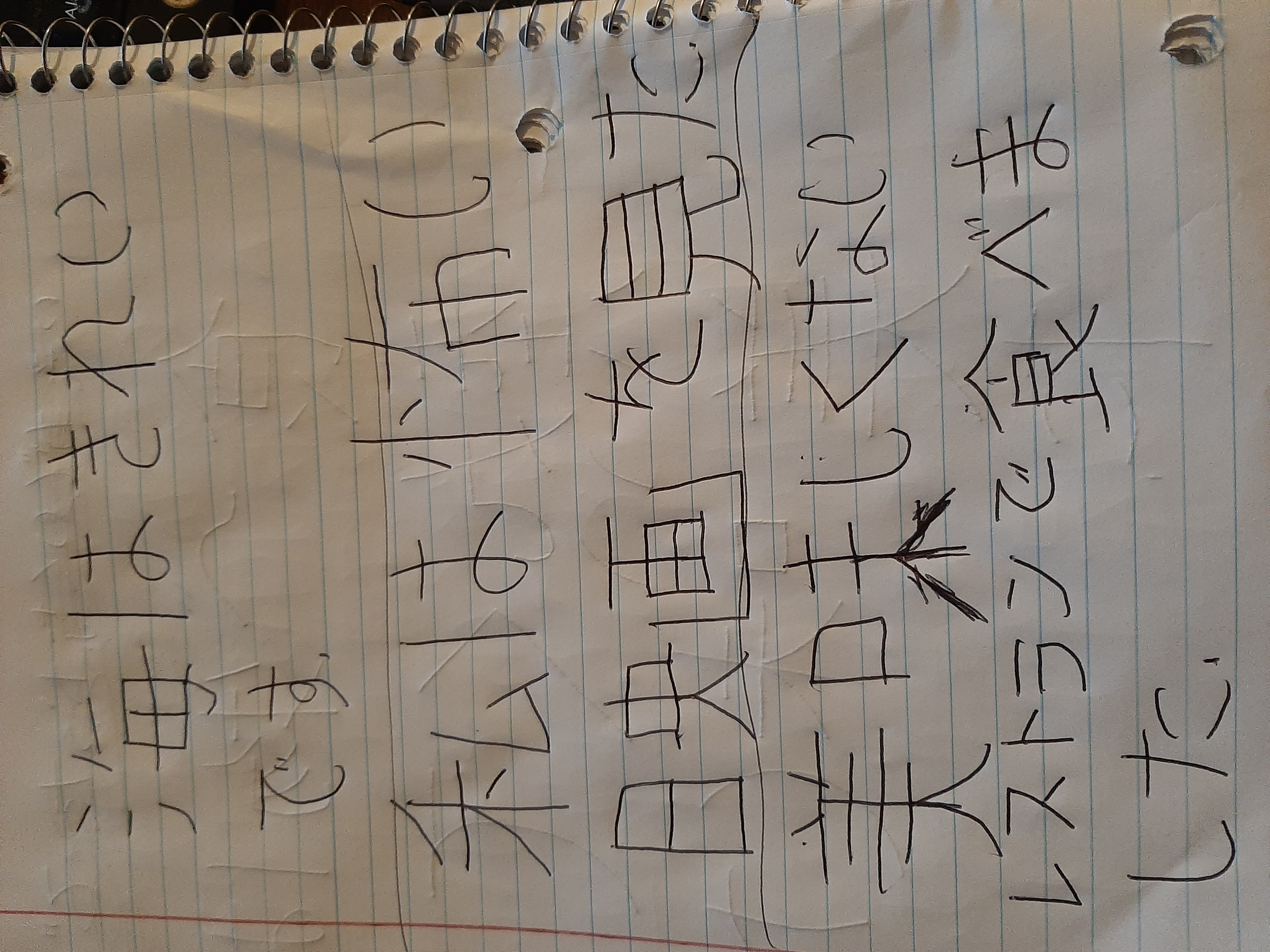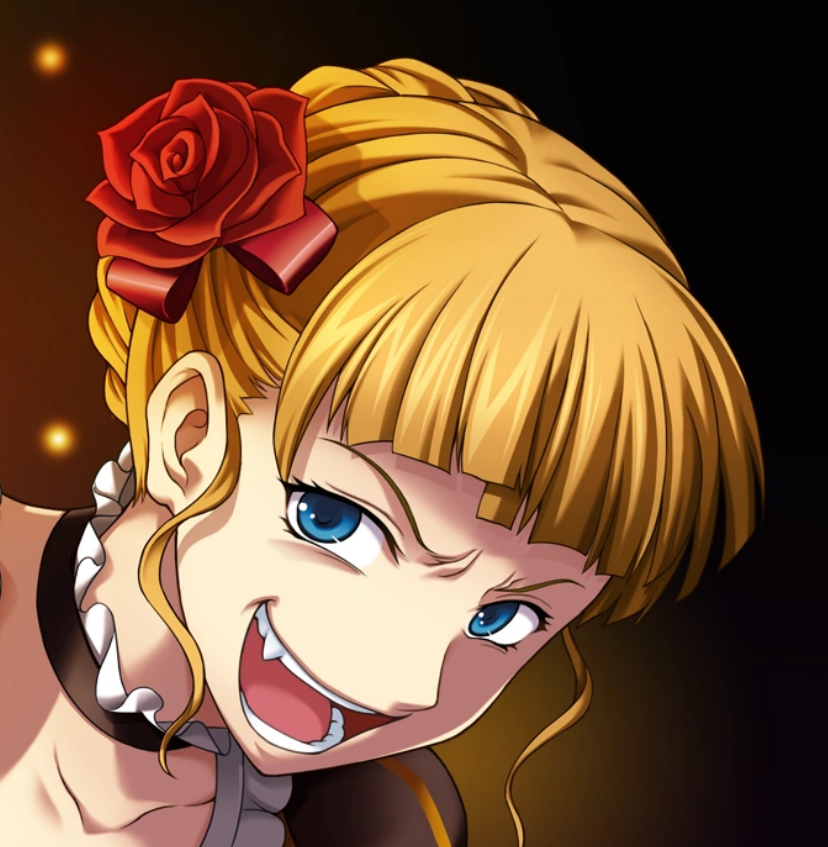- cross-posted to:
- chat
I'd say you need more experience in just writing in general but I'm not exactly sure how much time you've had with the language. I don't want to come off as nitpicky or needlessly mean about anything either. Learning the language is a process in itself and I can guarantee that anything I'm saying now is something I'd say to myself back when I started. It reminds me of an relatively early childhood penmanship. It's legible but I feel like the radicals are oddly spaced in a few characters. It's a good starting point but there are some points I think that can use further improvement.
With 海 the radical mizu/sanzui seems a bit too far, similar with 怖, I had a small bit of confusion where I missed the radical kokoro and was only seeing 布 which was a bit confusing. With 映, it reads more like 日央 as well which I'd say you can rectify with just adjusting the size of 日 since it shouldn't be full sized anyway.
Your hiragana and katakana look alright, though the ン looks more like ソ to me and the trick to it is where you start the second stroke, with ン you start at the bottom and kinda swipe towards the left whereas with ソ you start in the right corner and draw curved to the bottom left.
Finally I just have a little question in regards to your stroke order because it feels a bit off, like with 美しい looks like you have the center line as a single line ending in a curve whereas the way to look at it would be a combination of ⺷ and 大, so you'd end at stroke 6 for the first part and then just write 大 under it. Here you can look at the stroke order easily enough with the main image and further down on the page you have a step by step stroke order as well.
My recognition is far superior to my writing, I spent about a month a few months ago shoring things up and I reached 4th grade before I sorta burned out for a while. My handwriting is absolute garbage but I see improvements in the stuff I've written over the years to being more fluid even if a native speaker would still my writing sucks. I know utilizing Japanese sources is basically impossible when starting, but the Japanese kanji dictionary I linked before has a lot of good resources even for a visual aspect like stroke order. One other thing I'd sorta emphasize while you're still relatively fresh to things is picking up radicals, even a little bit helps a bunch because suddenly you're looking at the characters in a different light and once you learn a bunch of components it's more like putting things together rather than remembering this giant character.
A super simple example is 木 meaning tree which then turns into 林 which is like a small bunch of trees like you'd see around property lines in more rural areas in America/a grove if that makes more sense, then you have 森 which is forest. 晴れ (clear weather) is 日 (sun) and 青 (blue) which is relatively simple to remember by thinking sunny and blue skies.
Yeah it's fine. I can read it. I wouldn't worry too much about penmanship tbh. Japanese people have horrendous handwriting. I don't know if you saw my post from a while back, but I'd say focus on input (audio, video, reading) instead of output (writing, speaking): https://hexbear.net/post/58145. Also check out my post about why you still can't understand your target language: https://hexbear.net/post/61072. Until you've "acquired" the language, nothing is really gonna stick when you try to output. That time is better spent with trying to comprehend your input.
For Kanji, do something called "Recognition RTK" (https://massimmersionapproach.com/table-of-contents/stage-1/jp-quickstart-guide/#rrtk). In fact that quickstart guide is pretty much all you need in the beginning (I don't know what you're level is).
It's perfectly understandable. The only one that gave me pause was the 映 character in 映画. It looked like two separate characters. To be honest, I have the same problem with my own handwriting. I need to drill more.

